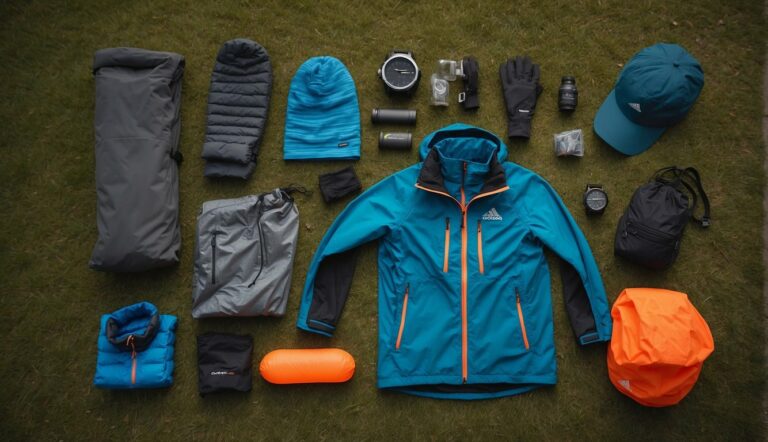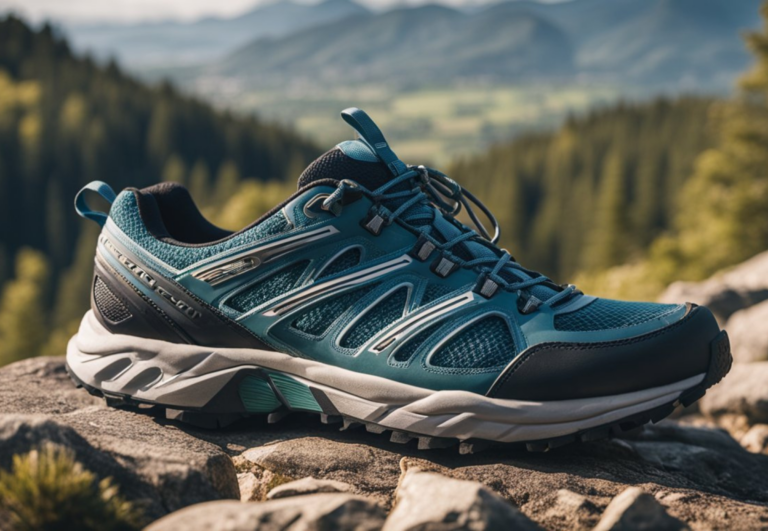The Importance of Good Posture in Trail Running: Enhancing Performance and Injury Prevention
As a UESCA certified running coach with firsthand experience on the trails, I’m keenly aware of the pivotal role good posture plays in trail running. Recognizing the relationship between posture and performance is instrumental for runners aiming to enhance their trail experiences. Good posture facilitates proper muscle and ligament function, which in turn supports efficient movement. This efficiency is critical on uneven terrain, where energy conservation is key.
In trail running, every step is an interaction with a variable surface, be it dirt, gravel, or rock. Maintaining a good posture allows runners to adapt to these changing conditions with agility and minimize the risk of injury. A forward lean from the ankles, not the waist, a relaxed upper body and engaged core exemplify the good posture that can help trail runners navigate steep inclines and declines without unnecessary strain.
My coaching philosophy emphasizes that correct alignment and balance are not only essential for injury prevention but also for optimal power generation and endurance on the trails. By keeping the body’s center of gravity over the feet, trail runners can move more naturally and respond quickly to the terrain’s challenges. This approach to running posture ensures that trail runners can enjoy their sport with less fatigue and greater overall satisfaction.
Fundamentals of Posture in Trail Running
Maintaining correct posture during trail running is crucial for breathing efficiency and preventing injuries.
Understanding the Basic Posture Elements
In trail running, the foundation of good posture starts with proper alignment. This includes keeping the head aligned with the spine, the shoulders relaxed but squared, and the hips stable.
The pelvis should be neutral, not tilting forward or backwards, ensuring that the core muscles are engaged to support the lower back. The feet are the final touchpoint, striking the ground effectively to propel you forward.
Key Posture Components:
- Head: Keep it up, eyes forward.
- Shoulders: Relaxed and level.
- Back: Maintain a neutral spine.
- Hips & Pelvis: Stable and aligned with the upper body.
- Feet: Strike the ground efficiently.

Role of Good Posture in Performance
Good posture in trail running not only reduces the risk of injury but also enhances performance by improving respiratory efficiency and energy utilization. When my shoulders are squared and my core is engaged, I can breathe more deeply and run more efficiently. This aligned position allows for optimal oxygen intake and energy expenditure, enabling me to maintain a steady pace even on challenging trails.
Performance Benefits:
- Optimal Breathing: More oxygen for energy generation.
- Enhanced Stability: Less energy wasted on correcting imbalances.
- Improved Propulsion: Effective foot strike for better traction and push-off.
Common Postural Issues and Injuries
In trail running, maintaining good posture is crucial to avoid common injuries which can arise from postural imbalances. Poor posture can lead to issues such as knee pain and lower back discomfort, ultimately affecting stride and running efficiency.
Identifying Posture-Related Injuries
Identifying posture-related injuries often begins with recognizing pain or discomfort in areas like the knees and lower back. Common injuries include:
- IT Band syndrome, often presenting as knee pain
- Back discomfort, potentially stemming from weak core muscles
- Muscle strains, particularly in the lower legs
It’s critical to listen to my body and seek assessment if I notice consistent pain when running, as this can be a sign of underlying postural issues.
Preventive Strategies for Postural Imbalances
To prevent postural imbalances, I recommend the following strategies:
- Focus on core stability to support the lower back
- Engage in routine strength training to correct muscle imbalances
- Incorporate stretching into my daily regimen to maintain muscle elasticity
Running form checks:
- Occasionally review my stride and body alignment while running
- Consider cues like running tall to ensure a good posture
By staying vigilant about my running form and maintaining a strong, flexible body, I can minimize the likelihood of postural injuries.
Improving Running Posture

Improving your running posture is key to efficiency and injury prevention on the trails. By focusing on specific exercises, strength-building, and technique adjustments, you can enhance alignment and performance.
Postural Exercises and Stretching
Stretching and targeted exercises can greatly improve flexibility and correct posture. Primarily, the hip flexors and calves should receive attention as they often become tight due to prolonged sitting or incorrect running form.
- Hip Flexor Stretch: Kneel in a lunge position and push hips forward, holding the stretch for 30 seconds per side.
- Calf Stretch: Place hands on a wall with one leg straight behind you, heel on the ground, and lean forward, holding for 30 seconds.
Building Strength and Stability
A stable core and strong postural muscles are the foundation for good posture in running. Incorporate core exercises to reinforce the stability needed for trail running.
Core Exercises:
- Planks (hold for 30 seconds to 1 minute)
- Side planks (hold for 30 seconds per side)
Lower Body Stability:
- Squats: Aim for 3 sets of 10-15 repetitions.
- Lunges: Perform walking or stationary lunges, 3 sets of 10 repetitions per leg.
Technique Adjustments for Trail Terrain
Trail terrain demands adaptability in running technique to maintain good posture. Adjust your strides over uneven ground and use your arms for balance to keep your center of gravity aligned.
- Short, Quick Steps: Over rocky or rooted sections, shorten your stride to maintain stability and reduce impact.
- Upright Torso Alignment: Keep your torso upright and avoid excessive leaning, especially on inclines.
By incorporating these exercises, strength routines, and technical adjustments, my running form has become more efficient, contributing to better performance and fewer injuries.
Advanced Concepts in Running Form

In trail running, refining stride, enhancing upper body mechanics, and mastering endurance-related breathing are pivotal for peak performance and efficiency.
Optimizing Stride and Cadence
My approach to perfecting stride and cadence centers on tailoring these elements to each runner’s physiology. An optimal stride is one that allows for a midfoot strike under the center of gravity, reducing the braking force with each step.
Cadence, the number of steps taken per minute, should typically range between 160-180 steps, but it’s crucial to find a rhythm that matches one’s natural mechanics for energy conservation.
Stride Considerations
- Foot Strike: Aim for a midfoot strike, directly under the torso.
- Leg Extension: Minimize over-striding to prevent excessive impact.
Cadence Tips
- Step Rate: Monitor and adjust to fall within an efficient 160-180 steps per minute.
- Rhythm: Sync with natural gait patterns for improved endurance.
Evolving the Upper Body Mechanics
Upper body movement is just as essential as what happens below the waist. The arm swing should complement the movement of the legs, moving in a controlled but relaxed swing from the shoulders.
Keeping the torso stable and upright, with a slight forward lean from the ankles, allows the gluteus maximus to engage properly, facilitating power and preventing overuse injuries.
-
- Arms: Should move in opposition to legs, helping to propel and balance.
- Relaxation: Maintain relaxed shoulders to avoid wasted energy.
Torso Dynamics
- Posture: Keep the spine straight with a slight forward lean at the ankles, not the waist.
- Stability: Engage the core to support the spine and running mechanics.
Breathing and Endurance Factors
Breathing is intricately linked to endurance in trail running. Efficient running form pairs rhythmic breathing with strides.
For instance, practicing a 3:2 pattern—inhaling for three steps and exhaling for two—can help in syncing the breath with foot strikes, maintaining a controlled breathing pattern even during challenging terrains. This promotes oxygen delivery and can aid in reducing fatigue.
-
- Patterned Breathing: Adopt a 3:2 inhale-to-exhale ratio matching stride rate.
- Deep Breathing: Utilize diaphragmatic breathing for increased oxygen uptake.
-
- Interval Training: Mix high-intensity bursts with recovery to boost stamina.
- Consistent Practice: Regular, mindful running enhances breath control and endurance.
Utilizing External Tools and Guidance

To enhance trail running performance, incorporating technology and expert coaching can optimize posture and form. These resources provide valuable feedback and visualize the ideal running posture for trail runners.
The Role of Technology and Apps
I always recommend that runners use technological tools and apps to improve their running posture. Outside+ and similar apps can track your runs and provide visual feedback on your form.
These apps often feature video analysis functions, allowing you to analyze your running tall posture in motion. By reviewing the footage, you can identify any posture issues you may have. Utilizing a mirror can also provide immediate visual feedback during indoor training sessions. To summarize, here’s how you can use tech and apps:
- Video Analysis: Review footage of your running to spot postural deviations.
- Apps: Use tools like Outside+ for detailed run tracking and visual posture analysis.
- Mirror: Check your form in real-time during indoor runs.
Professional Coaching and Feedback
Engaging a coach for professional feedback is crucial in mastering the ideal running posture. As a UESCA certified running coach, I provide personalized feedback to runners. This tailored guidance helps correct postural misalignments and reinforces proper techniques such as running tall.
One-on-one coaching sessions allow for immediate correction and instruction. Additionally, attending workshops or running clinics can be beneficial for hands-on learning. Here’s a quick guide on how to make the most out of professional coaching:
- One-on-One Coaching: Get personalized tips and corrections from a certified coach.
- Running Clinics: Participate in group sessions for diverse feedback and support.
- Regular Feedback: Consistently work on your form through guided training.
Cultivating Long-term Postural Health

Good postural health is crucial for trail runners. It enhances lung capacity and stamina, and it’s something I’m passionate about as a UESCA certified running coach. Let’s explore how to maintain optimal posture for running.
Regular Assessment and Correction
I advise runners to regularly assess their posture, both during running and in daily life. Running tall is a technique that helps maintain alignment, and it’s simple to practice.
You can use a mirror to check alignment, looking for a straight line from your ears, shoulders, and hips to your ankles. Additionally, incorporating exercises like the kneeling hip flexor stretch can correct imbalances that impact your running posture.
Key Practices for Regular Assessment:
- Use a mirror: Regularly check posture from the side view.
- Record your runs: Assess if you’re maintaining good technique throughout.
Lifestyle Considerations Beyond Running
Postural habits extend beyond the trail. Your daily activities, including time spent at your desk, play a significant role. As a running coach, I encourage incorporating core-strengthening exercises, like bridges, which fortify the back and abdominal muscles. I also recommend yoga, which can improve flexibility and posture over time.
Daily Habits to Support Posture:
- Desk posture: Engage core muscles; sit back with shoulders over hips.
- Stretching routine: Include yoga poses to enhance flexibility and core strength.






